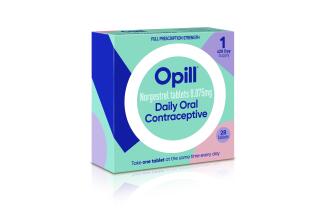FDA Approves J&J;’s Birth Control Patch
- Share via
WASHINGTON — U.S. health officials approved the sale of the world’s first contraceptive patch Tuesday, giving women an option considered as safe and effective as the pill but easier for some to use.
Ortho-Evra releases through the skin low doses of the same hormones used in birth control pills--but requires women to use it weekly instead of daily like a pill.
Overall, “it is very, very, very similar to the pill” in preventing pregnancy, said Dr. Dena Hixon, a Food and Drug Administration medical reviewer.
The manufacturer, the Ortho-McNeil Pharmaceuticals unit of Johnson & Johnson, said the patch will be sold by prescription, beginning next year. The price will be about the same as birth control pills, which cost about $40 a month.
Contraception experts eagerly welcomed the long-awaited patch, the fourth new contraceptive option to win FDA approval in the last year.
The trend is toward options that don’t have to be used daily or immediately before intercourse, said Dr. Vanessa Cullins, medical vice president for Planned Parenthood.
Those options include contraceptive injections taken every month or every three months, implants or intrauterine devices that prevent conception for years, and--the most novel until Tuesday’s approval--a hormone-emitting contraceptive ring placed in the vagina once a month.
But the patch is the easiest of these methods to use, Cullins said.
“You’re just going to slap it on your skin,” she said. “It gives women more control ... and it’s less invasive than other long-term methods.”
But the FDA, in approving the matchbook-size beige patch, warned that Ortho-Evra might not work as well for women who weigh more than 198 pounds.
In clinical trials that gave 3,319 women the patch for varying amounts of time, 15 became pregnant--and one-third of those weighed 198 pounds or more. That suggests the patch might not deliver enough pregnancy-preventing hormones to these women, Hixon said.
Women would use one patch a week for three weeks, then go patch-free for a week.
The patch is designed to stick to skin despite bathing or swimming. But if one slips off and won’t restick, Ortho-McNeil will sell packages of single replacement patches.
If a patch falls off for more than a day, the woman should start a new four-week cycle of patches and use a backup method of contraception for the first week, the FDA advised. In studies, about 5% of women had at least one patch slip off.
The FDA was convinced of the patch’s reliability, citing one study in which 90% of patch users properly placed it once a week, compared with 80% of women who remembered to take a birth control pill every day.
The patch delivers continuous low levels of estrogen and progestin, the same hormones found in birth control pills, to prevent ovulation.
That means the patch carries the same risks as the pill: short-term side effects including nausea or breast tenderness, and rare risks of blood clots, heart attack and stroke.
Johnson & Johnson shares rose 88 cents to close at $60.78 on the New York Stock Exchange.





